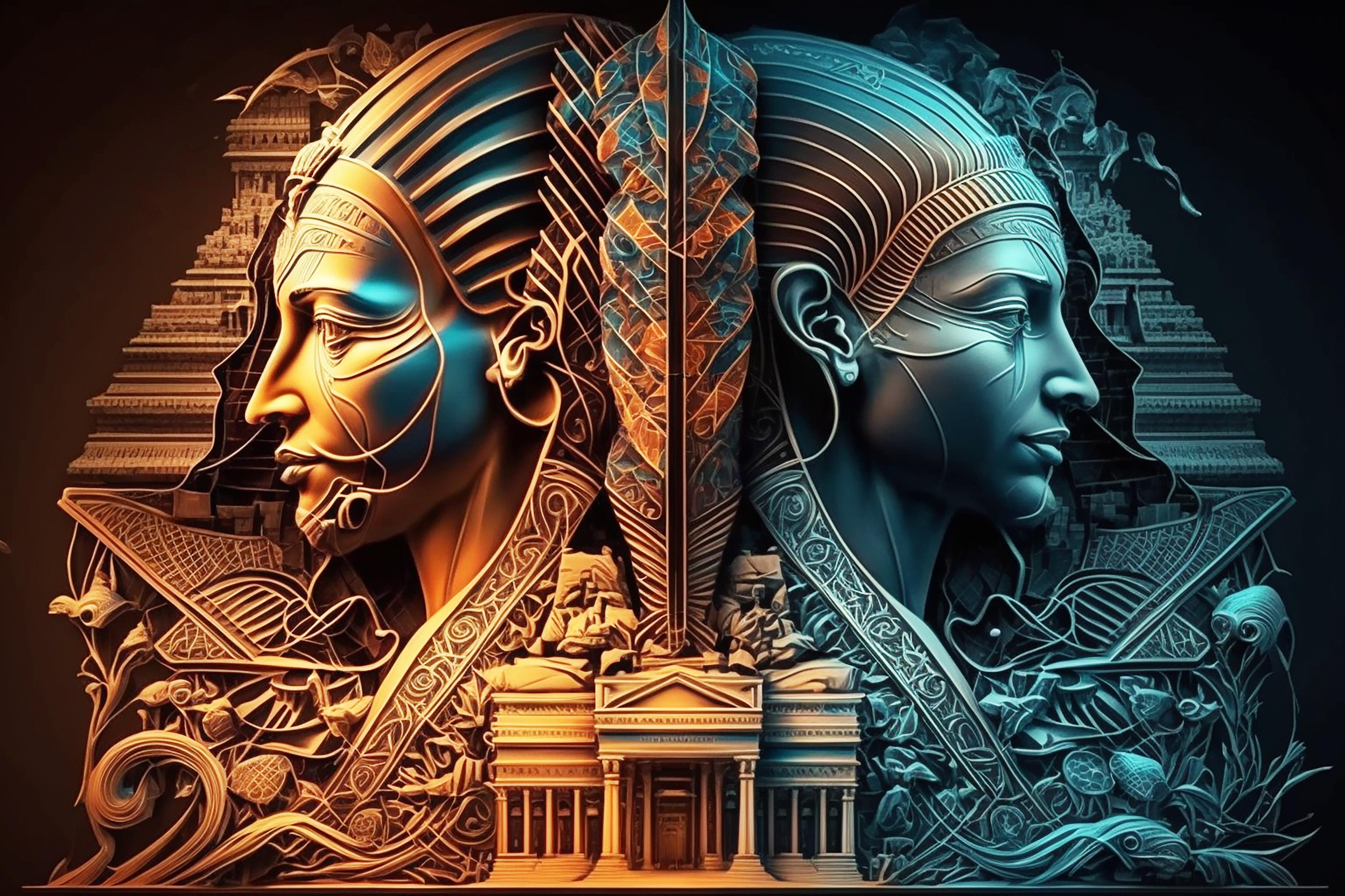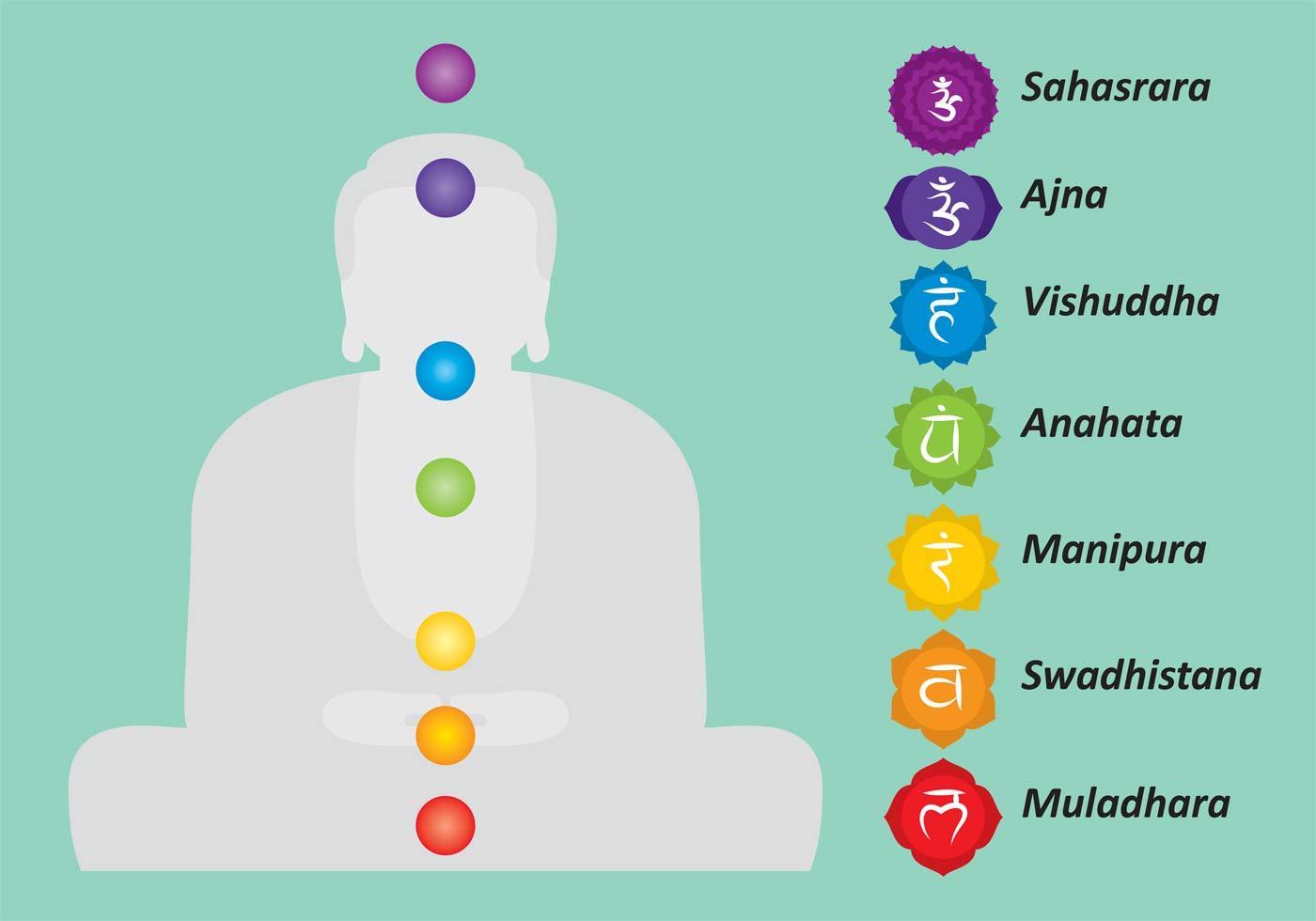Kabbalah Revealed: Uncover the Path to Spiritual Enlightenment
Embark on a journey to understand the profound teachings of Kabbalah and its role in achieving spiritual enlightenment. Kabbalah, a rich and complex system of thought, offers insights into the nature of the universe and humanity's place within it.

The study of Kabbalistic wisdom reveals the intricate connections between the physical and spiritual worlds, providing a deeper understanding of the world's complexities and our own lives.
By exploring the principles of Kabbalah, individuals can uncover new paths to personal growth and spiritual awakening, leading to a more fulfilling and meaningful life.
Key Takeaways
- Understanding Kabbalah's core teachings and their relevance to modern life.
- The significance of Kabbalistic wisdom in achieving spiritual enlightenment.
- Practical applications of Kabbalah in personal growth and development.
- Exploring the connections between the physical and spiritual realms.
- Embracing Kabbalistic principles for a more fulfilling life.
The Ancient Origins of Kabbalah
Delving into the history of Kabbalah reveals a rich tapestry of spiritual teachings and ancient traditions. Kabbalah, a mystical aspect of Jewish tradition, has evolved significantly over the centuries.
Historical Roots in Jewish Mysticism
Kabbalah's roots are deeply embedded in Jewish mysticism, drawing from ancient sources and sacred texts. The early Kabbalists interpreted biblical texts to uncover hidden meanings and spiritual truths.
Evolution Through the Ages
As Kabbalah evolved, it incorporated various influences while maintaining its core principles. Key milestones include:
- The emergence of new texts and teachings
- The influence of other mystical traditions
- The adaptation to changing historical contexts
From Oral Tradition to Written Texts
The transition of Kabbalah from an oral tradition to written texts marked a significant turning point. The Zohar, a foundational Kabbalistic text, was among the key works committed to writing.
This evolution transformed Kabbalah into a more accessible and widespread Kabbalah teachings, influencing both Jewish communities and broader spiritual circles.
Core Principles of Kabbalistic Wisdom
The principles of Kabbalistic wisdom provide a framework for understanding the mysteries of existence. This ancient wisdom offers insights into the nature of the divine and the universe, guiding individuals on their spiritual journeys.
The Tree of Life (Sefirot)
The Tree of Life is a central symbol in Kabbalistic teachings, representing the ten divine emanations or Sefirot through which the infinite divine energy manifests. It serves as a map of the spiritual universe, illustrating the interconnectedness of all things.
Understanding the Ten Divine Emanations
The ten Sefirot are: Keter (Crown), Chokhmah (Wisdom), Binah (Understanding), Chesed (Loving-kindness), Gevurah (Strength), Tiferet (Beauty), Netzach (Eternity), Hod (Splendor), Yesod (Foundation), and Malkhut (Kingdom). Each Sefirah represents a different aspect of the divine and human experience.
| Sefirah | Aspect |
|---|---|
| Keter | Crown, divine will |
| Chokhmah | Wisdom, initial thought |
| Binah | Understanding, expansion of thought |
The Concept of Ein Sof (The Infinite)
Ein Sof, or the Infinite, is a fundamental concept in Kabbalah, referring to the divine as beyond human comprehension or limitation. It represents the ultimate reality that underlies all existence.
"The Infinite is not just a concept, but a living reality that permeates every aspect of our lives." -
The Four Worlds of Creation
Kabbalistic teachings describe four worlds or levels of creation: Atzilut (the world of emanation), Beriah (the world of creation), Yetzirah (the world of formation), and Assiah (the world of action). Each world represents a different stage in the manifestation of the divine.
Understanding these core principles of Kabbalistic wisdom can deepen one's spiritual practice and foster a greater connection to the divine. By exploring the Tree of Life, the concept of Ein Sof, and the Four Worlds of Creation, individuals can gain insights into the nature of reality and their place within it.
Discover the Secrets of Kabbalah: Your Path to Spiritual Awakening
Embarking on a journey to discover the secrets of Kabbalah can be a transformative experience that opens doors to spiritual awakening. This ancient wisdom offers a profound understanding of the universe and our place within it, providing a pathway to personal transformation.
Unveiling Hidden Knowledge
Kabbalah is rooted in the idea that there is more to reality than what we can perceive with our senses. By studying Kabbalistic teachings, we can gain insight into the hidden forces that shape our lives. This knowledge allows us to navigate life's challenges more effectively and make more informed decisions.
Personal Transformation Through Kabbalistic Practice
The practice of Kabbalah is not just about acquiring knowledge; it's about applying its principles to transform our lives. Through meditation, prayer, and ethical living, we can align ourselves with the divine light that flows through all existence. This alignment fosters a sense of inner peace and connection to the world around us.
Connecting with Divine Light
At the heart of Kabbalistic practice is the concept of connecting with the divine light. This light is seen as the source of all creation and the sustenance of life. By cultivating a deeper connection to this light, individuals can experience a profound sense of spiritual awakening and personal transformation.
As we integrate the teachings of Kabbalah into our daily lives, we begin to notice a shift in our perspective and our interactions with others. We become more compassionate, more mindful, and more attuned to the needs of those around us. This transformation is at the core of the Kabbalistic path, guiding us toward a more authentic and fulfilling existence.
Key Texts in Kabbalistic Tradition
For those delving into Kabbalah, understanding its key texts is essential for unlocking the deeper mysteries of this ancient wisdom. The study of these sacred texts provides a foundation for grasping the broader teachings of Kabbalah.
The Zohar: Cornerstone of Kabbalah
The Zohar is arguably the most influential text in Kabbalistic literature. This foundational work is a mystical commentary on the Torah, exploring the nature of the divine and the universe. As noted by scholar Gershom Scholem, "The Zohar is not just a book, it's an event in the history of Jewish mysticism."
Sefer Yetzirah and Other Essential Writings
Another crucial text is the Sefer Yetzirah, or "Book of Creation," which delves into the mysteries of creation through the symbolism of numbers and letters. Other significant writings include the works of Rabbi Isaac Luria, whose commentaries have had a lasting impact on Kabbalistic thought.
Modern Interpretations and Commentaries
In contemporary times, the teachings of Kabbalah continue to evolve through modern interpretations and commentaries. Scholars and spiritual leaders offer new insights into traditional texts, making Kabbalistic wisdom more accessible to a broader audience. As Rabbi Yehuda Berg aptly puts it, "Kabbalah is not just about reading texts; it's about applying the wisdom to our lives."
The exploration of these key texts and their interpretations not only deepens one's understanding of Kabbalah but also illuminates the path to spiritual enlightenment.
Major Schools and Approaches to Kabbalah
The multifaceted nature of Kabbalah is reflected in its various schools and approaches, catering to different seekers of spiritual knowledge. This diversity has enriched the tradition, offering a wide range of perspectives and practices.
Lurianic Kabbalah and Cosmic Repair
Lurianic Kabbalah, developed by Rabbi Isaac Luria, introduced the concept of tzimtzum (contraction), where the infinite divine light contracted to create a space for the universe to exist. This school emphasizes the role of humanity in the cosmic repair (tikkun olam), suggesting that our actions can mend the brokenness in the world.
Hasidic Interpretations and Everyday Spirituality
Hasidic interpretations of Kabbalah focus on bringing mystical concepts into everyday life. This approach, pioneered by the Baal Shem Tov, emphasizes joy, simplicity, and the presence of divine light in all actions. Hasidism made Kabbalistic teachings more accessible, encouraging a personal and emotional connection to the divine.
Contemporary Kabbalah Movements
Contemporary Kabbalah movements continue to evolve, incorporating various modern interpretations. Some focus on the academic study of Kabbalistic texts, while others emphasize practical applications in daily life.
Academic vs. Practical Approaches
The study of Kabbalah can be approached from both academic and practical perspectives. While academic study provides a historical and contextual understanding, practical application involves integrating Kabbalistic teachings into one's spiritual practice.
| Approach | Focus | Key Features |
|---|---|---|
| Lurianic Kabbalah | Cosmic Repair | Tzimtzum, Tikkun Olam |
| Hasidic Interpretations | Everyday Spirituality | Joy, Simplicity, Divine Presence |
| Contemporary Movements | Modern Applications | Academic Study, Practical Integration |
In conclusion, the diverse schools and approaches to Kabbalah offer a rich tapestry of spiritual practices and understandings. Whether through Lurianic Kabbalah's focus on cosmic repair, Hasidic interpretations of everyday spirituality, or contemporary movements, Kabbalah continues to be a vibrant and evolving tradition.
Symbols and Metaphors in Kabbalistic Teaching
Kabbalah employs a unique symbolic language, weaving together letters, numbers, and visual elements to convey spiritual truths. This rich tapestry of symbols serves as a bridge between the material and spiritual worlds, offering practitioners a profound means of connecting with the divine.

Letters and Numbers as Spiritual Tools
In Kabbalistic tradition, letters and numbers are not just elements of a language or a mathematical system; they are considered powerful spiritual tools. Each letter and number holds specific energies and meanings, used in meditation, prayer, and study to unlock deeper levels of understanding and connection with the divine.
Visual Symbolism in Kabbalah
Visual symbolism plays a crucial role in Kabbalah, with diagrams like the Tree of Life serving as maps of the spiritual universe. These symbols help practitioners navigate the complexities of the divine realm and understand their place within it.
Decoding Sacred Geometry
Sacred geometry is a key aspect of Kabbalistic visual symbolism, where geometric patterns and shapes are used to represent the harmony and unity underlying the universe. By studying these patterns, practitioners can gain insights into the fundamental laws of creation and the interconnectedness of all things.
| Symbol | Meaning | Spiritual Significance |
|---|---|---|
| Letters | Building blocks of language | Hold spiritual energies and meanings |
| Numbers | Mathematical values | Represent divine proportions and patterns |
| Geometric Shapes | Visual representations of harmony | Reveal the underlying unity of the universe |
The Inner Journey: Kabbalah as a Path to Self-Discovery
Through Kabbalistic teachings, individuals can embark on a transformative journey of self-discovery and spiritual awakening. Kabbalah provides a profound understanding of the self, guiding individuals through the complexities of their inner world.
Understanding Your Soul's Structure
In Kabbalistic tradition, the soul is composed of multiple layers, each with its unique characteristics and roles. Understanding these layers is crucial for spiritual growth and self-awareness. The five levels of the soul are:
- Nefesh: The vital life force, connected to the physical body.
- Ruach: The spirit, representing the emotional and intellectual aspects.
- Neshama: The higher soul, associated with intuition and spiritual connection.
- Chaya: The level of the soul that connects to the divine life force.
- Yechida: The highest level, representing unity with the divine.
Balancing Inner Attributes
Kabbalah teaches that individuals have various attributes or middot, such as kindness, severity, and compassion. Balancing these attributes is essential for achieving inner harmony and spiritual equilibrium. Practices such as meditation and reflection can help in this balancing act.
Overcoming Spiritual Obstacles
On the path to self-discovery, individuals may encounter spiritual obstacles, including negative emotions and internal conflicts. Kabbalistic teachings offer guidance on overcoming these challenges through practices like:
- Meditation on positive attributes.
- Prayer and connection with the divine.
- Study of Kabbalistic texts for insight and guidance.
By applying these practices, individuals can navigate their spiritual journey more effectively, leading to greater self-awareness and inner peace.
Practical Applications of Kabbalah in Daily Life
Integrating Kabbalistic principles into daily life can lead to profound personal transformation. By applying these ancient teachings, individuals can cultivate a deeper understanding of themselves and the world around them.
Meditation Techniques and Visualizations
Kabbalah offers various meditation techniques that help individuals connect with their inner selves. One such method involves visualizing the Sefirot, or the divine emanations, to align one's energy with the divine flow. Regular practice can lead to a heightened sense of awareness and inner peace.
Prayer and Contemplative Practices
Prayer in Kabbalah is not just a religious ritual but a means of contemplative practice that fosters a deep connection with the divine. Kabbalistic prayers are designed to elevate the soul and bring about spiritual awakening. By incorporating these prayers into daily life, one can experience a profound sense of spiritual growth.
Ethical Living Through Kabbalistic Principles
Kabbalah emphasizes the importance of ethical living as a means to achieve spiritual enlightenment. This includes treating others with kindness, compassion, and respect. Kabbalistic teachings encourage individuals to embody these virtues in their daily interactions, thereby contributing to a more harmonious society.
Tikkun Olam: Repairing the World
A core aspect of Kabbalistic ethics is the concept of Tikkun Olam, or "repairing the world." This principle encourages individuals to take an active role in making the world a better place. By engaging in acts of kindness, charity, and environmental stewardship, one can fulfill this Kabbalistic imperative and contribute to the greater good.
By embracing these practical applications of Kabbalah, individuals can experience a transformative impact on their lives, fostering personal growth, spiritual development, and a deeper connection to the world around them.
Common Misconceptions About Kabbalah
Despite its rich history, Kabbalah is frequently subject to misconceptions and misinterpretations. Many people view Kabbalah as a mysterious or esoteric practice disconnected from its Jewish roots.
Separating Fact from Fiction
One common misconception is that Kabbalah is solely a mystical tradition focused on the supernatural. In reality, Kabbalah offers a profound understanding of the universe and humanity's role within it.
Cultural Appropriation vs. Respectful Study
The popularity of Kabbalah has led to concerns about cultural appropriation. It's essential to approach Kabbalah with respect and understanding of its origins, avoiding superficial or commercialized interpretations.

Beyond Celebrity Trends
Kabbalah has been popularized by celebrities, but this attention often overshadows its deeper significance. By looking beyond the surface, one can discover the rich spiritual and philosophical insights that Kabbalah offers.
In conclusion, understanding Kabbalah requires moving beyond common misconceptions and trends. By engaging with its teachings respectfully and thoughtfully, one can uncover the true depth of this ancient tradition.
The Relationship Between Kabbalah and Other Spiritual Traditions
The intricate web of Kabbalah intersects with numerous spiritual traditions, revealing a rich tapestry of universal principles. This mystical Jewish tradition shares commonalities with various forms of spirituality, demonstrating its place within the broader landscape of human spiritual exploration.
Parallels with Eastern Mysticism
Kabbalah's emphasis on the interconnectedness of all things and the concept of Ein Sof (the Infinite) parallels certain aspects of Eastern mysticism, such as the Buddhist concept of sunyata (emptiness) and the Hindu notion of Brahman (the ultimate reality). These similarities highlight the shared human quest for understanding the nature of existence.
Influence on Western Esoteric Traditions
Kabbalah has significantly influenced Western esoteric traditions, including alchemy, Hermeticism, and modern occultism. The symbolic language and mystical concepts of Kabbalah have been incorporated into various Western spiritual practices, enriching their theological and philosophical frameworks.
Shared Universal Principles
Despite differences in cultural and religious contexts, various spiritual traditions share universal principles. The concept of the unity of all existence, the importance of love and compassion, and the pursuit of spiritual enlightenment are common themes found in Kabbalah and other mystical traditions.
| Spiritual Tradition | Key Concept | Shared Principle |
|---|---|---|
| Kabbalah | Ein Sof (the Infinite) | Unity of all existence |
| Buddhism | Sunyata (emptiness) | Interconnectedness |
| Hinduism | Brahman (ultimate reality) | Pursuit of enlightenment |
Beginning Your Journey into Kabbalistic Study
As you begin your exploration of Kabbalah, you'll discover a rich tapestry of teachings and practices designed to foster spiritual growth and understanding.
Recommended Resources for Newcomers
For those new to Kabbalah, starting with foundational texts is essential. The Zohar and Sefer Yetzirah are cornerstone texts that provide insights into Kabbalistic teachings. Online courses and introductory books by reputable authors can also offer a structured learning path.
Finding Authentic Teachers and Communities
Connecting with authentic teachers and communities is crucial for a meaningful Kabbalistic study experience. Look for recognized Kabbalistic centers or organizations that offer guidance and support. Engaging with a community can enhance your understanding and provide a supportive environment for your spiritual journey.
Developing a Personal Practice
Developing a personal Kabbalistic practice involves integrating its principles into daily life. This can include meditation, prayer, and ethical living based on Kabbalistic teachings. Starting with small, consistent practices can lead to profound personal transformations.
Conclusion: Embracing the Mystical Journey
As we conclude our exploration of Kabbalah, it's clear that this ancient wisdom offers a profound path to spiritual enlightenment. The mystical journey, with its rich symbolism and deep insights, invites us to transform our understanding of the world and ourselves.
Through Kabbalistic teachings, we've uncovered the intricate web of connections between the universe and our inner lives. By embracing this wisdom, we can cultivate a deeper sense of purpose and meaning, aligning our lives with the principles of balance, compassion, and spiritual growth.
As you continue on your own mystical journey, remember that Kabbalah is not just a body of knowledge, but a living practice that guides us toward inner transformation and enlightenment. May the insights and principles of Kabbalah inspire and illuminate your path forward.
FAQ
What is Kabbalah, and how can it benefit my spiritual journey?
Kabbalah is an ancient Jewish mystical tradition that offers a deeper understanding of the universe and our place within it. By studying Kabbalah, you can gain insights into the nature of the divine, the structure of the soul, and the path to spiritual enlightenment, ultimately leading to a more meaningful and purposeful life.
What are the core principles of Kabbalistic wisdom?
The core principles of Kabbalistic wisdom include the Tree of Life (Sefirot), the concept of Ein Sof (The Infinite), and the Four Worlds of Creation. These principles provide a framework for understanding the complex and multifaceted nature of the divine and the universe.
How can I apply Kabbalistic teachings in my daily life?
Kabbalistic teachings can be applied in daily life through practices such as meditation, prayer, and ethical living. By incorporating these practices into your daily routine, you can cultivate a deeper sense of spirituality, compassion, and connection to the world around you, leading to a more balanced and fulfilling life.
What are some recommended resources for studying Kabbalah?
Recommended resources for studying Kabbalah include the Zohar, Sefer Yetzirah, and other classic Kabbalistic texts. You can also explore modern interpretations and commentaries, as well as online courses and workshops, to deepen your understanding of Kabbalistic teachings.
How can I find authentic teachers and communities to guide me on my Kabbalistic journey?
To find authentic teachers and communities, research reputable organizations and centers that offer Kabbalistic studies and workshops. You can also seek out experienced teachers and mentors who can provide guidance and support as you navigate your spiritual journey.
What is the significance of the Tree of Life in Kabbalistic teachings?
The Tree of Life is a central symbol in Kabbalistic teachings, representing the ten divine emanations (Sefirot) that emanate from the infinite. It provides a framework for understanding the complex relationships between the divine, the universe, and humanity, and is used as a tool for spiritual growth and self-discovery.
How does Kabbalah relate to other spiritual traditions?
Kabbalah shares parallels with other spiritual traditions, such as Eastern mysticism and Western esoteric traditions. While it has its unique principles and practices, Kabbalah is part of a broader spiritual landscape that encompasses various traditions and paths to spiritual enlightenment.
Links:








